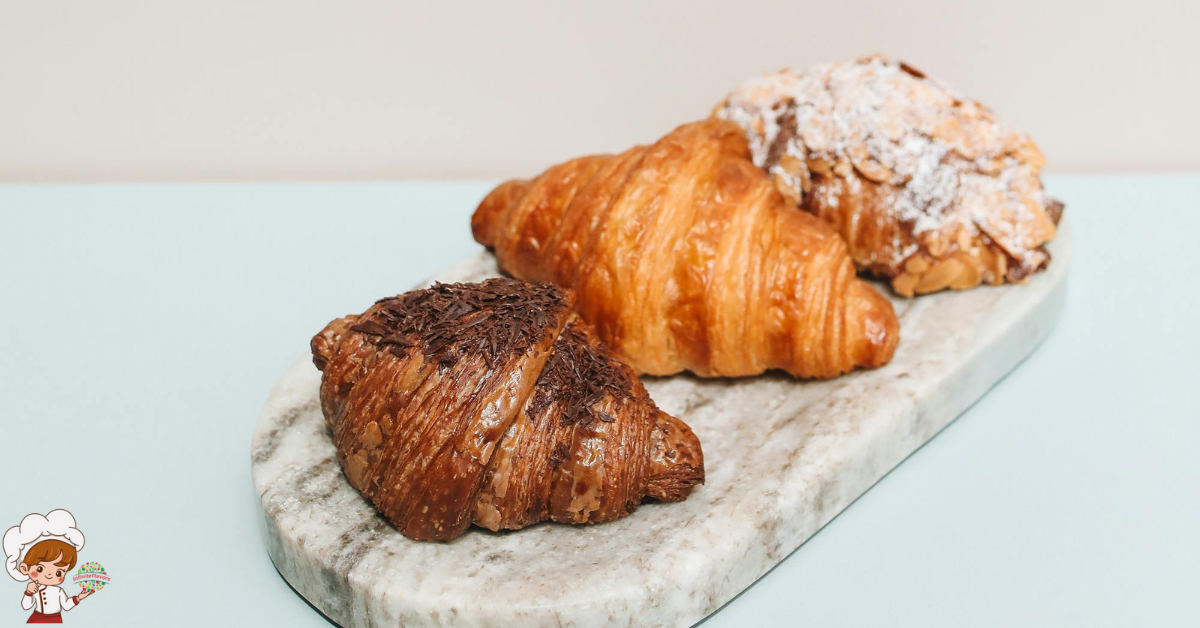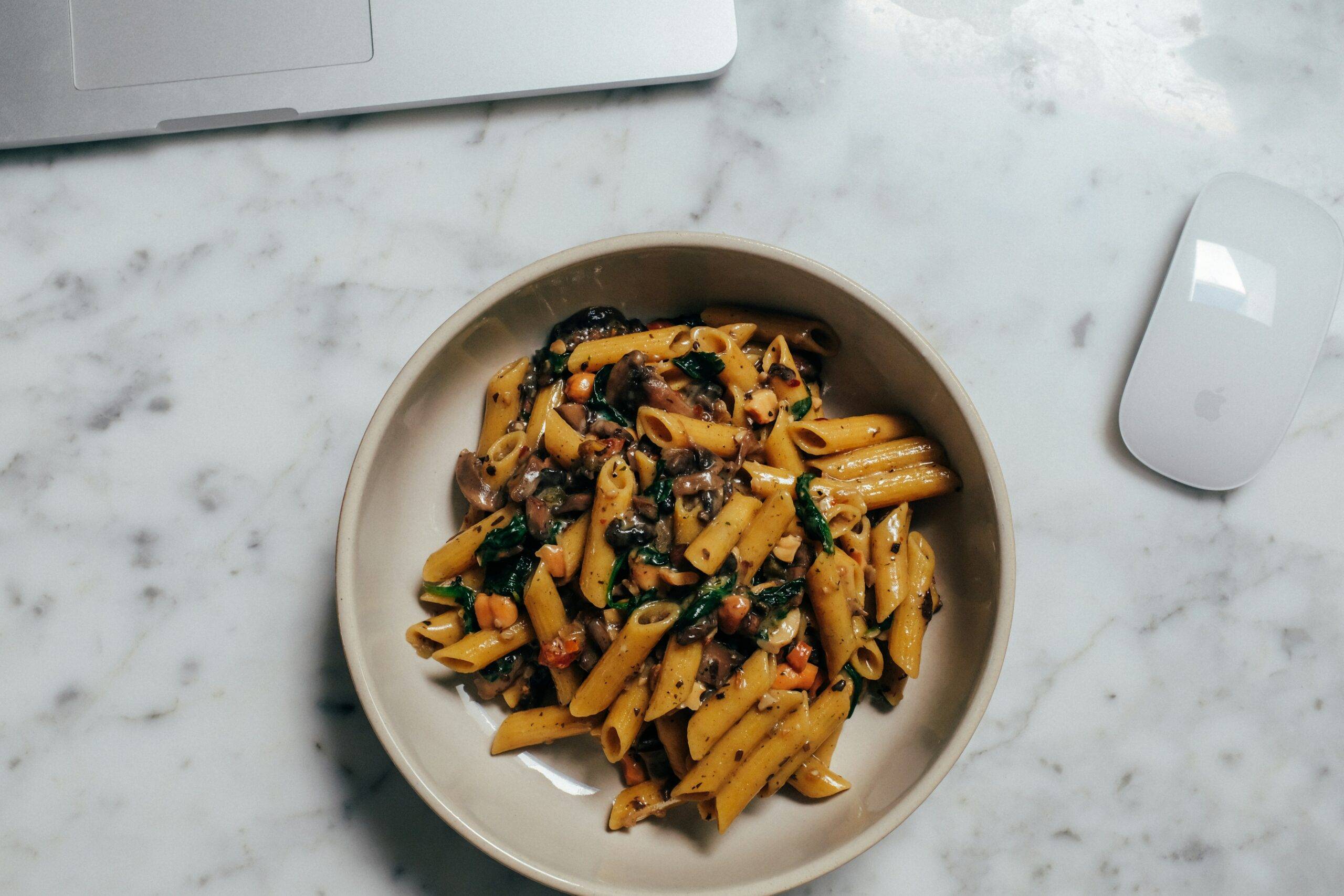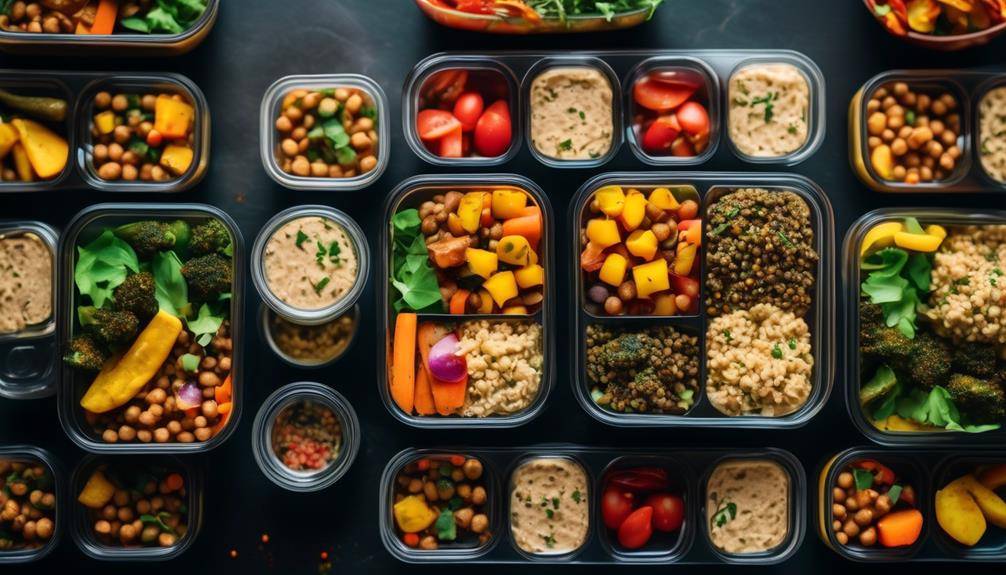Popular French Baking Techniques For Croissants

French Baking Techniques For Croissants; Have you ever wondered how those buttery, flaky croissants at your favorite French bakery are made? The secret lies in the meticulous techniques of French baking. From the selection of high-quality ingredients to the delicate process of layering butter, every step plays a crucial role in achieving the perfect croissant. But that’s just the beginning. As you delve deeper into the world of French baking, you’ll discover the art of folding and shaping the dough, the importance of the proofing process, and the baking techniques that result in those irresistibly golden and flaky pastries. So, get ready to uncover the secrets behind the mouthwatering croissants that have captured the hearts of pastry lovers worldwide.
The Importance of High-Quality Ingredients
When it comes to creating the perfect croissant, using high-quality ingredients is of utmost importance. The importance of freshness and sourcing ingredients cannot be overstated. In French baking, attention to detail is key, and the quality of the ingredients used directly affects the final product.
To achieve the light and flaky texture that is characteristic of a well-made croissant, it is essential to use fresh ingredients. Fresh butter, for example, is crucial for creating the delicate layers of pastry. It lends a rich flavor and contributes to the desired texture. Similarly, using fresh flour ensures that the croissant dough will have the right consistency and rise properly during baking.
Sourcing ingredients from reputable suppliers is also vital. French pastry chefs take great care in selecting the best quality ingredients. They seek out butter with a high fat content and flour that is finely milled. These meticulous choices result in croissants that are not only visually appealing but also incredibly flavorful.
In addition to butter and flour, other ingredients such as eggs and yeast should also be of high quality. Fresh eggs add richness and contribute to the golden color of the croissant. The yeast should be active and fresh to ensure proper fermentation and a light, airy dough.
Mastering the Dough Preparation
To truly master the art of creating perfect croissants, you must now focus on the meticulous process of preparing the dough. Achieving the ideal dough consistency is crucial in order to create croissants that are light, flaky, and have that unmistakable buttery aroma. The dough for croissants is made using yeast, which needs to be activated properly to ensure a successful rise.
The first step in preparing the dough is to activate the yeast. Yeast is a living organism that needs warm liquid to awaken and begin its fermentation process. You can achieve this by dissolving the yeast in lukewarm water or milk, along with a pinch of sugar. The sugar acts as food for the yeast, helping it to multiply and create carbon dioxide, which will give the croissants their airy texture.
Once the yeast is activated, it is time to combine it with the other ingredients to form the dough. This typically includes flour, butter, salt, and sometimes sugar. The ingredients are mixed together until a smooth and elastic dough is formed. It is important to knead the dough properly to develop the gluten, which will give the croissants their structure and texture.
Throughout the dough preparation process, it is important to pay attention to the temperature of the ingredients and the environment. The butter should be cold but pliable, and the dough should be kept in a warm but not hot place to allow for proper fermentation. The dough should also be rested and chilled at various stages to allow for relaxation and development of flavor.
Mastering the dough preparation is a true art form in itself. It requires precision, patience, and attention to detail. With practice and a deep understanding of the process, you will be able to create croissants that are truly exceptional. So roll up your sleeves, gather your ingredients, and let your journey to croissant perfection begin.
Achieving the Perfect Butter Layering
To achieve the perfect butter layering in your croissants, you must master the art of rolling and folding the dough. This technique creates those coveted flaky layers that make each bite a delight. Additionally, chilling the dough at key intervals helps to maintain the integrity of the butter layers, ensuring a light and airy texture. Lastly, using high-quality butter is crucial, as it adds richness and flavor to the final product.
Rolling and Folding
Achieving the perfect butter layering in croissants requires a masterful dance between dough and butter, resulting in a delicate and flaky pastry that is the epitome of French baking. To achieve this, the dough must possess the ideal elasticity, allowing it to stretch and fold without tearing. This is achieved by activating the yeast, which releases carbon dioxide and creates air pockets within the dough, contributing to its light and airy texture. Rolling and folding the dough is a crucial step in the process.
By encasing the butter within thin layers of dough, it creates a laminated structure that, when baked, expands and produces the distinct flakiness that is characteristic of croissants. Each roll and fold adds another layer of butter, creating a perfect balance of richness and crispness in every bite. Mastering this technique requires precision, patience, and a deep appreciation for the traditional art of French baking.
Chilling the Dough
Chilling the dough is a crucial step in achieving the perfect butter layering for croissants, as it allows the butter to firm up and create distinct layers of flakiness when baked. To ensure optimal results, a dough scraper is a valuable tool to have during the chilling process. It helps in evenly distributing the butter, preventing any air bubbles or uneven layers from forming.
As you scrape the dough, the butter is spread evenly, ensuring each layer is consistent and delicate. Troubleshooting common issues with chilled croissant dough involves paying attention to the temperature. If the dough becomes too warm, the butter will melt and result in a loss of layering. On the other hand, if the dough is too cold, it becomes difficult to roll and fold. The key is to find the right balance, allowing the dough to chill sufficiently while remaining pliable enough to work with.
Using High-Quality Butter
During the process of chilling the dough, one key element that contributes to achieving the perfect butter layering for croissants is the use of high-quality butter. When it comes to butter selection, opt for a European-style butter with a high fat content, around 82%. This type of butter has a lower water content, resulting in a richer and more flavorful croissant.
Additionally, pay attention to the butter’s temperature. It should be cool, but pliable, around 60°F (15°C). If the butter is too cold, it will break when rolling out the dough. On the other hand, if it’s too warm, it will melt and seep into the dough, compromising the flakiness. Achieving the perfect butter layering requires precision in both butter selection and temperature control.
The Art of Folding and Shaping
To create the perfect croissant, you must master the art of folding and shaping. It requires a delicate touch and precise technique. Proper dough handling, a flawless rolling technique, and impeccable shaping methods are the key to achieving the light, flaky layers that define a classic French croissant.
Proper Dough Handling
Master the delicate art of folding and shaping the croissant dough to create the perfect layers of flaky goodness. Proper dough handling is crucial in achieving the desired texture and taste. Begin by gently kneading the dough to develop gluten without overworking it. This step ensures that the croissants will have a light and airy interior. Avoid excessive kneading, as it can result in a tough and dense pastry.
Once the dough is properly kneaded, it is time to fold and shape it. With a light touch, carefully roll out the dough into a thin, rectangular shape. Then, fold it into thirds, creating distinct layers. Repeat this process several times, allowing the dough to rest in between each fold. This meticulous technique guarantees the characteristic flakiness of a French croissant.
Precise Rolling Technique
Achieve the iconic flaky layers of a French croissant by mastering the precise rolling technique, a crucial step in the art of folding and shaping the dough. To begin, ensure that your dough consistency is just right—soft and pliable, yet not sticky. Lightly flour your work surface and roll the dough out into a rectangle. With a gentle touch, use a rolling pin to elongate the dough, maintaining an even thickness throughout.
The goal is to create thin, uniform layers that will puff up beautifully when baked. Be mindful not to overwork the dough, as this could result in a tough texture. Instead, focus on achieving a smooth, supple surface that will allow for easy folding and shaping. With practice and patience, your croissants will boast the signature flakiness that is synonymous with French baking.
Flawless Shaping Methods
Embrace the artistry of folding and shaping as you perfect the flawless methods that will elevate your croissants to new heights. To achieve the desired flaky texture and uniformity, it is crucial to follow precise techniques when shaping your dough. Begin by gently rolling out your dough into a large rectangle, ensuring even thickness throughout. Next, use a sharp knife or a pastry cutter to cut precise triangles.
Starting from the wider end, carefully roll each triangle towards the pointed end, giving your croissants their iconic shape. As you fold and shape, pay attention to each layer, ensuring they are neatly tucked and sealed. This meticulous attention to detail will result in beautifully layered croissants with a delicate, flaky texture that is sure to impress.
Understanding the Proofing Process
To truly understand the proofing process in French baking techniques for croissants, one must grasp the delicate dance of yeast, temperature, and time. Proofing is a crucial step that allows the dough to rise and develop its distinctive light and flaky texture. The proofing process involves the activation of yeast, which is responsible for fermentation and the release of carbon dioxide gas. This gas creates bubbles within the dough, resulting in the desired airy structure.
The first step in the proofing process is to activate the yeast. This can be done by combining it with warm water or milk and a small amount of sugar. The sugar feeds and activates the yeast, causing it to produce carbon dioxide. The temperature of the liquid is crucial, as it should be warm enough to activate the yeast but not too hot to kill it. Once the yeast is activated, it is added to the dough and allowed to ferment.
During fermentation, the dough is left at a controlled temperature for a specific period. This allows the yeast to consume the sugars in the dough, producing carbon dioxide and alcohol as byproducts. The carbon dioxide is trapped within the dough, causing it to rise and expand. The longer the fermentation process, the more complex the flavors will be.
The proofing process requires precision and careful monitoring of time and temperature. The dough should be kept in a warm, draft-free environment to encourage fermentation. This can be achieved by placing it in a slightly warmed oven or covering it with a damp cloth. It is important to avoid overproofing, as it can lead to a dense and overly yeasty croissant.
Understanding the proofing process is essential for achieving the perfect croissant. By mastering the delicate balance of yeast activation, temperature control, and fermentation time, you can create croissants with a light, flaky texture and a delicate, buttery flavor. So, take your time, be patient, and let the magic of proofing transform your croissants into a culinary masterpiece.
Baking Techniques for Flaky and Golden Croissants
Master the art of baking techniques to create flaky and golden croissants that will transport you to a traditional French bakery. Achieving the perfect bake for your croissants requires careful attention to baking temperature and baking time.
To ensure a flaky and golden crust, preheat your oven to a high temperature, typically around 425°F (220°C). This high heat will help create the initial burst of steam, which is essential for achieving the signature flakiness of croissants. Place your croissants on a baking sheet lined with parchment paper, making sure to leave enough space between them to allow for expansion.
Once your oven has reached the desired temperature, place the baking sheet in the middle rack. Bake the croissants for about 15 to 18 minutes, or until they are beautifully golden brown. Keep a close eye on them as they bake, as the exact baking time may vary depending on your oven and the size of your croissants.
While baking, the croissants will undergo a transformation. The layers of butter in the dough will melt, causing steam to be released and creating those delightful flaky pockets. The heat will also give the exterior a golden hue, adding to their visual appeal.
Once baked, remove the croissants from the oven and let them cool on a wire rack for a few minutes. This will help them retain their texture and prevent them from becoming soggy.
Mastering the baking techniques for flaky and golden croissants requires practice and attention to detail. With the right baking temperature and baking time, you can create croissants that are a true delight to the senses. So, roll up your sleeves, get your ingredients ready, and embark on a journey to create your own delicious batch of French croissants.
Tips for Serving and Enjoying Authentic French Croissants
Indulge in the authentic flavors of French croissants with these tips for serving and savoring every buttery bite. To truly appreciate the artistry of a freshly baked croissant, serve it warm. Preheat your oven to 350°F, then place the croissants on a baking sheet and heat them for about five minutes. This will revive their flaky texture and release the heavenly aroma of butter. For an added touch of indulgence, dust the croissants with powdered sugar before serving.
When it comes to serving suggestions, there are a few classic options that pair perfectly with French croissants. One timeless choice is to spread a generous amount of creamy butter on the warm croissant. The butter melts into the layers, enhancing the richness and creating a divine combination of flavors. Alternatively, you can enjoy your croissant with a dollop of your favorite fruit preserve. The sweet and tangy flavors of the jam complement the buttery croissant, creating a delightful contrast.
Pairing options for French croissants go beyond spreads and condiments. A cup of freshly brewed coffee is a classic accompaniment that enhances the experience. The robust flavor of coffee complements the buttery notes of the croissant, creating a harmonious balance. If you prefer a lighter option, a cup of fragrant tea, such as Earl Grey or chamomile, can provide a soothing and aromatic pairing.
French Baking Techniques For Croissants; Frequently Asked Questions
How Do High-Quality Ingredients Affect the Taste and Texture of Croissants?
Using high-quality ingredients enhances the taste and texture of croissants. Temperature plays a crucial role in dough fermentation, while the egg wash gives croissants their beautiful appearance. These factors combine to create a traditional, artistic, and delicious pastry.
What Are Some Common Mistakes to Avoid When Preparing the Dough for Croissants?
To avoid common mistakes in croissant dough preparation, be precise and traditional. Don’t rush the process or overmix the dough. Use high-quality ingredients and follow the recipe carefully. Let the dough rest properly and handle it gently.
How Can I Ensure That the Butter Is Evenly Layered in the Croissant Dough?
To ensure even butter distribution and achieve consistent layers in your croissant dough, start by pounding butter into a flat rectangle. Gently roll the dough around the butter, folding and chilling between each layer.
Are There Any Tips for Achieving the Perfect Shape and Flakiness in Croissants?
To achieve the perfect shape and flakiness in croissants, focus on achieving consistent layers and using proper techniques for shaping. This will result in a precise, artistic, and traditional outcome.
How Long Should Croissant Dough Be Proofed, and What Are Some Signs That It Is Ready for Baking?
To achieve flakiness and perfect shape in croissants, proof the dough until it puffs up and doubles in size. Look for a smooth surface and gentle jiggle when lightly tapped. Then, it’s time to bake and savor the deliciousness.
Conclusion
As you conclude your journey into the world of French baking techniques for croissants, you have learned the artistry and precision required to create these flaky and golden delights. By using high-quality ingredients and mastering the dough preparation, butter layering, folding and shaping, proofing process, and baking techniques, you are now equipped to serve and enjoy authentic French croissants. Embrace the tradition and savor the deliciousness of these timeless treats. Bon appétit!








